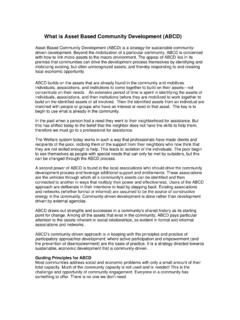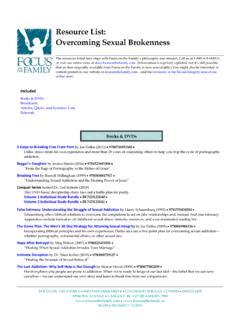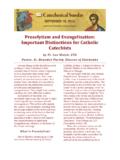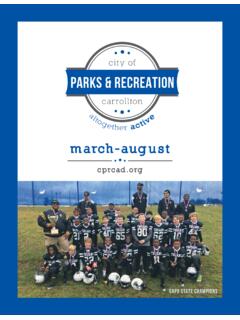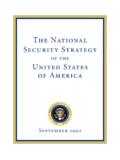Transcription of Cultural Competence - Knoxville Leadership …
1 Cultural Competence Cross Cultural Mentoring Overview WHAT: Define Cultural Competence , and its internal terms, culture, and Competence . WHY: Rationale for Cultural Competence in Mentoring HOW: Walk through the Steps of Building Cultural Competence in Mentor Relationships WHERE: Within Self-assessment &. reflection and Without Building Rapport with Youth Though Different, Our Paths Have Similar Turns: Prepare for the Journey! Perhaps travel cannot prevent bigotry, but by demonstrating that all peoples cry, laugh, eat, worry, and die, it can introduce the idea that if we try and understand each other, we may even become friends. Maya Angelou Cultural Competence is . a set of behaviors, attitudes, and practices that come together in relationships (interpersonal and professional) that empowers the individuals to work effectively in cross- Cultural situations h Cultural Competence Framework Behaviors Practices Policies CLC.
2 Attitudes Structures Five Elements of Cultural Competence Individual Level (1) Acknowledge Cultural differences (2) Understand your own culture (3) Engage in self-assessment (4) Acquire Cultural knowledge & skills (5) View behavior of self & others within a Cultural context Culturally competent mentoring: The ongoing process of gathering and utilizing knowledge, information and data from and about your mentee, his/her family, his/her peers, and his/her community. This information is integrated and serves to transform specific skills and strategies that enhance the quality and effectiveness of your mentoring relationship. Four Step Model of Building CLC: A plan for working effectively and respectfully with youth/families from a variety of backgrounds 1)Learn about culture and important Cultural components 2) Learn about your own culture through a process of self-assessment that includes examining your own culture's assumptions and values and your perspectives on them 3) Learn about the individual young people (and families) in your program 4) Learn as much as possible about important aspects of their Cultural backgrounds Step One: Learn About Culture Culture is defined as.
3 The body of learned beliefs, traditions, principles, and guides for behavior that are commonly shared among members of a particular group. Culture serves as a road map for both perceiving and interacting with the world. Components of Culture Language & Communication Style Family Relationships Gender/Sexual Identity Sexual Orientation/Sensuality/Sexualization Race & Ethnicity Religion & Spirituality Class & Socio-Economic Status (SES). Health Beliefs Levels of Acculturation Immigration Status Perception of Political Power Impact of Racism and History of Oppression Iceberg Theory of Culture Most important Cultural considerations exist beyond the surface! Culture is NOT just race/ethnicity! Other Important Considerations: Individualist/Collectivist Views High vs.
4 Low Comfort Level with Uncertainty/Risk Taking Internal vs. External Locus of Control Monochronic vs. Polychronic Time Indirect vs. Direct Communication Styles Types of Nonverbal Communication Styles Don't Assume .Ask! Four Step Model of Building CLC: A plan for working effectively and respectfully with youth/families from a variety of backgrounds 1) Learn about culture and important Cultural components 2) Learn about your own culture through a process of self-assessment that includes examining your own culture's assumptions and values and your perspectives on them 3) Learn about the individual young people (and families) in your program 4) Learn as much as possible about important aspects of their Cultural backgrounds Step Two: Self-Assessment Stepping through the Looking Glass.
5 Un-normalizes your view, so that you can understand that everyone has their 'If you think we're wax-works,' he said, own way of looking at and 'you ought to pay, you know. Wax- understanding the world works weren't made to be looked at for nothing, nohow!'. 'Contrariwise,' added the one marked Happens in Process 'DEE,' 'if you think we're alive, you ought to speak. Tweedledee &. May Be Quite Personal Tweedledum, Lewis Carroll Changes Perspective, opening up what you see as normal through your interactions with others who have different viewpoints A Thought Exercise on Privilege What are American Values? What are institutional values? How are the Norms decided upon in our institutions? Which Groups have those Rules Favored?
6 What Groups or Cultures play may have a different set of norms ? How have groups been affected historically, socially, economically by marginalization? In what ways, through which processes, have the Norms changed historically? Let's Play A Game!!! Our Exercise on Race, Class, and Privilege may provide some answers . Four Step Model of Building CLC: A plan for working effectively and respectfully with youth/families from a variety of backgrounds 1) Learn about culture and important Cultural components 2) Learn about your own culture through a process of self-assessment that includes examining your own culture's assumptions and values and your perspectives on them 3) Learn about the individual young people (and families) you serve 4) Learn as much as possible about important aspects of their Cultural backgrounds Step Three: Cultural Discovery Engaging in a process of learning about an individual, family, or community's Cultural values, beliefs, and behaviors.
7 No significant learning occurs without significant relationship. Dr. James Comer Remember: Culture is viewed and understood through your own lens and it requires investigation beyond the surface Earning the Right to Be Heard Rapport = connection, especially harmonious or sympathetic, an understanding Set the tone for open communication Watch your language neutral adult, not parental . Build Trust be consistent! Empower Your Mentee teach problem solving skills rather than giving solutions; allow them to give input and make small decisions Ask Questions! Seek First to Understand, then to Be Understood Discovering Youth: Developmental Considerations Preschool (Ages 2-5). Elementary (Ages 5-10). Pre-teen (Ages 10-13).
8 Teen (Ages 13-18). Look for similarities. Explore differences! Understanding Disadvantage: Socio- Economic Considerations Generational Poverty = Life in impoverished situation for two or more generations;. carries its own culture, hidden rules, and belief systems Background Noise . Significance of Entertainment Oral Language Tradition Survival Orientation Gendered Expectations Ownership of People Attitudes towards Discipline Polarized Thinking Lack of Order/Organization Recognizing Risk: Considerations for Children of Incarcerated Parents Prison Subculture: the values & behavioral patters and characteristics of prison inmates, that often extend to family members & to communities largely populated by those exposed to the penal system Group Identity & Norms Distrust of Agencies, Organizations, Government and anyone they feel represents these institutions Secretive Behaviors & Fear of Punishment Exposure to Illegal/Dangerous/Violent Activity Exposure to Grief/Trauma **Don't force mentees to talk about difficult topics, but be available to listen/support if they open the discussion in their own time & at their own level**.
9 How You Help: Developing Protective Factors The mentee/mentor relationship offers the opportunity to introduce & reinforce factors that research has shown to help at-risk youth develop into successful adults. Look for opportunities to encourage these in your mentee: Resilient temperament Sense of self-efficacy and self-advocacy High expectations Healthy view of and stable relationship with a parent/caregiver Connection to adults and peers who hold positive attitudes and model' positive social behaviors Opportunities for involvement in meaningful activities Ability to develop social & reasoning skills, and receive recognition & due praise Step Four: Discover Cultures Continue the Journey towards CLC and Challenge Others To Do the Same Spend Time Getting to Know and Interacting with Youth/Family Members/Co-Workers/Community Members to learn perspectives outside of your own Believe in and Create Environments for Mutual Respect and Mutual Learning Don't Be Afraid to Ask Questions and Actively Listen to Answers Seek First to Understand, Then to Be Understood Like People, and if Possible, Love Them As long as you think you're green, you'll grow.
10 As soon as you think you're ripe, you'll rot. - Scott Horton For More Information Contact & Future Trainings Contact: Chrystal D. Armstrong Youth/ Cultural & Linguistic Competency Coordinator Phone: (865) 523-0701. Email.

